Churchill War Rooms – A Must Visit in London
Samuel Johnson famously said, “When a man is tired of London, he is tired of life” and he was dead on. Perhaps no city on earth has as many must see attractions as London – The Tower of London, Buckingham Palace, The British Museum, Westminster Abbey, even Madame Tussaud’s if you can stand the lineups. However, there is one must see attraction that hasn’t been around anywhere near as long as the others. The Churchill War Rooms were only opened in 1984 and since then have slowly started to gain recognition as a place as equally important in history to anything else London has to offer. In my opinion, here’s why you need to include this place in your next visit to the great city on the Thames.
What are the Churchill War Rooms?
Obviously the name says almost everything you need to know – this is place where Winston Churchill and his Cabinet planned the defence and ultimately successful prosecution of WWII against Adolph Hitler and his Nazi minions. The War Cabinet met here a total of 115 times, but they didn’t just use it as a secure meeting space. During the Battle of Britain and the Blitz and in the final days of WWII when V1 and V2 rockets rained down on London, they lived like a colony of mole rats, deep underground in claustrophobic cramped quarters with fetid air and dim light, all the while sending out orders around the world that changed the course of history.
This much I knew as I made my reservation to visit the Churchill War Rooms. What I did not know is that these rooms also contain the definitive museum dedicated to the life of the man I consider to be the greatest of the 20th century – Winston Leonard Spencer Churchill. I’ve read a number of biographies of Churchill including William Manchester’s masterful trilogy The Last Lion and only by understanding Churchill’s life from beginning to end do you realize what a truly amazing man he was. As the Churchill War Rooms guidebook notes, when he was born there were no lightbulbs, no airplanes and no radio and when he died there were colour TVs, lasers and men in space. He participated in the last cavalry charge of the British Army, was a POW in the Boer War, after his failure at Gallipolli he served penance by fighting in the trenches on the Western Front, he was a Cassandra on the dangers of appeasing the Nazis and only when the nation was in the direst of straits was he called upon to become its leader and shepherd it through the darkest period in its history. To top it off he won a Nobel Prize, not for Peace, but for Literature. And he was a much better painter than Hitler.
To be honest, after visiting the Churchill War Rooms, it was the Churchill Museum that left the greatest impression.
Visiting the Churchill War Rooms
Here’s the best advice I can give you in this post – buy your tickets on line. Not only do you save 10%, £18.90 vs. £21.00, but you get access to the priority line. Since March of 2018 entry to the Churchill War Rooms is limited to scheduled times and if you don’t have an advance ticket you can easily wait over an hour to get in. I mentioned above that the space was claustrophobic and cramped during WWII; well it still is, so the number of visitors has to be limited. About every five minutes the next group of about twenty is ushered down and in through this space right behind Alison.
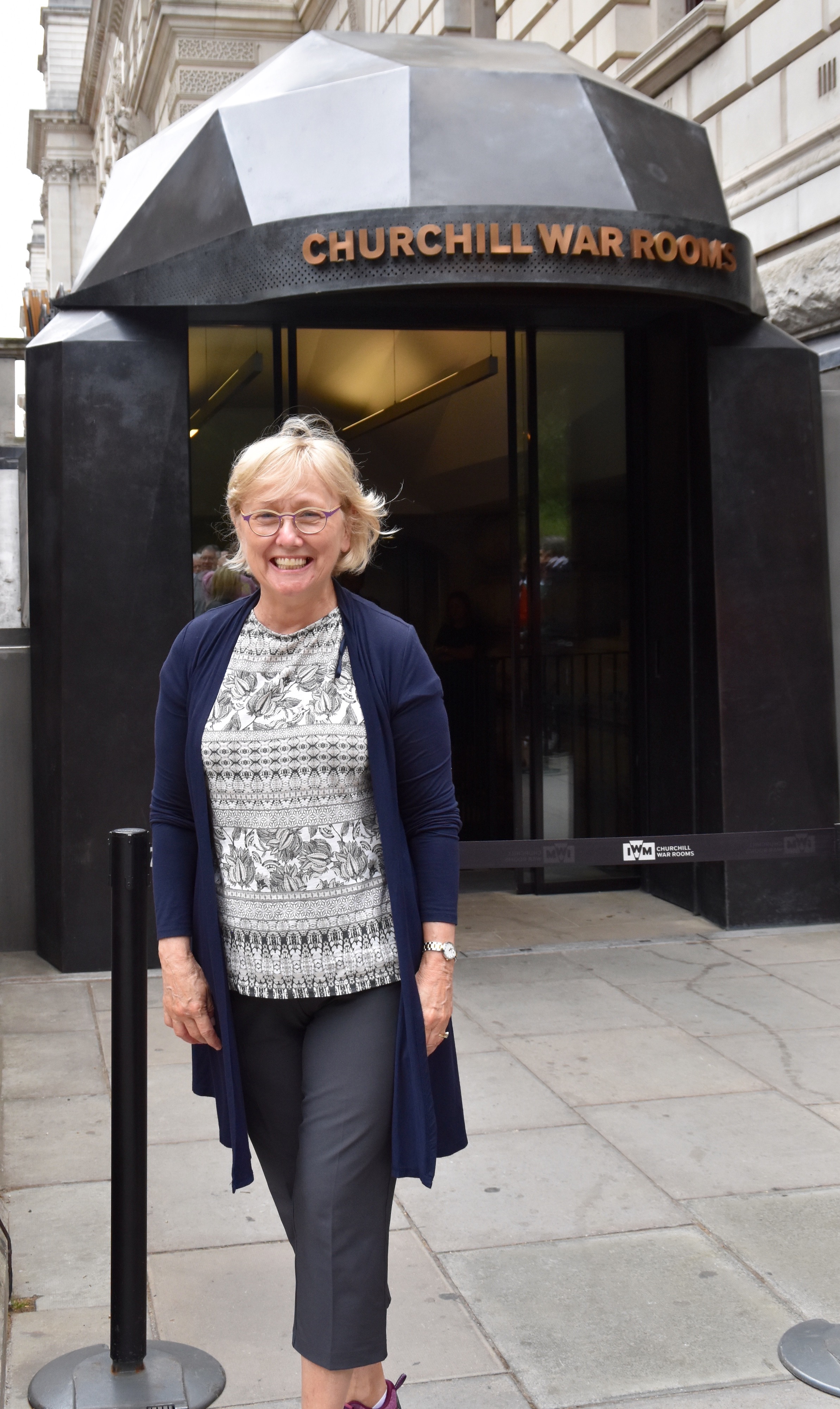
Once inside, after buying or showing your pre-bought tickets, you get an audio guide which is essential to getting the most out of your visit. It’s included with the admission price. I would also recommend buying the small guidebook which makes for a great souvenir of your visit. After that you follow a one-way path through the site with the Churchill museum about a third of the way through. Once inside there are no time constraints on how long you can stay – I would estimate about two hours for a normal visit.
Royal Marines were stationed throughout the Churchill War Rooms as security and you can get your picture taken with one today.
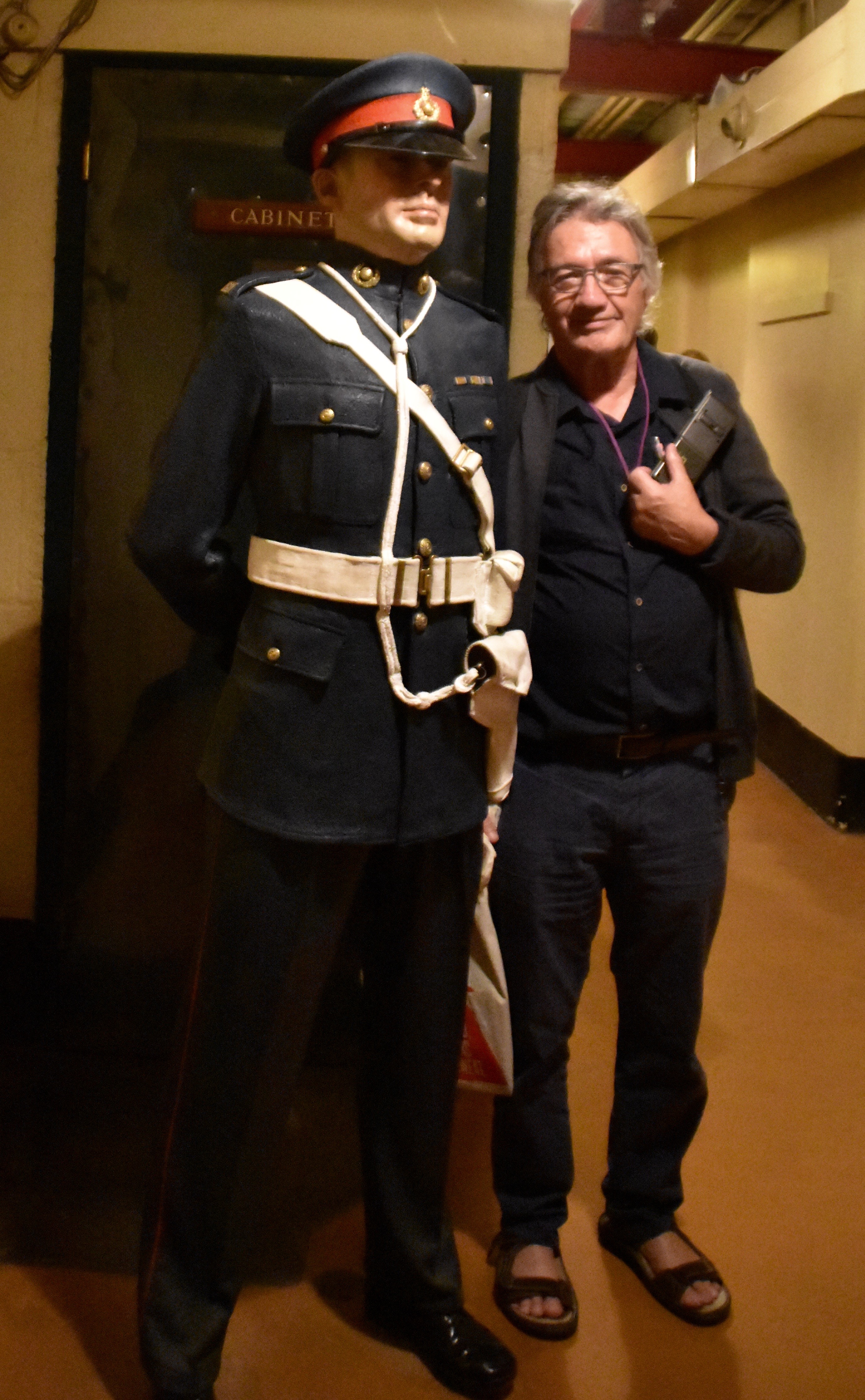
Somewhat surprisingly, I could not find a map of the Churchill War Rooms online, so I photographed the one in the guidebook. You can just make out the red arrowed path which you follow as yopu tour the facility.
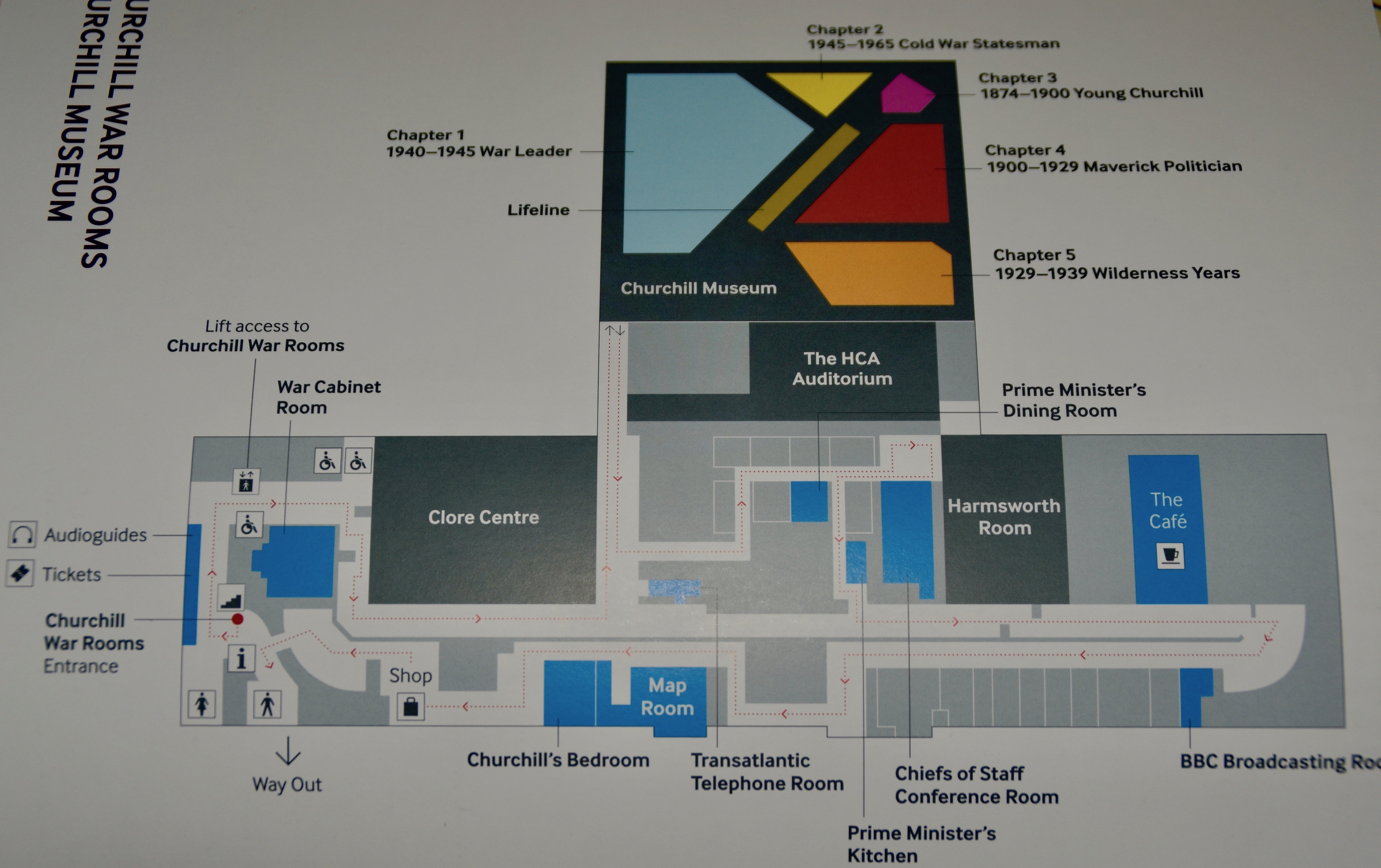
The first major room you come to is probably the most important on site – the War Cabinet Room where Churchill preside over most of those 115 meetings. That’s his chair under the map. While you cannot actually enter the rooms (except on a guided tour) you do get a good look through the plexiglass. The audioguide explains the significance of each room.
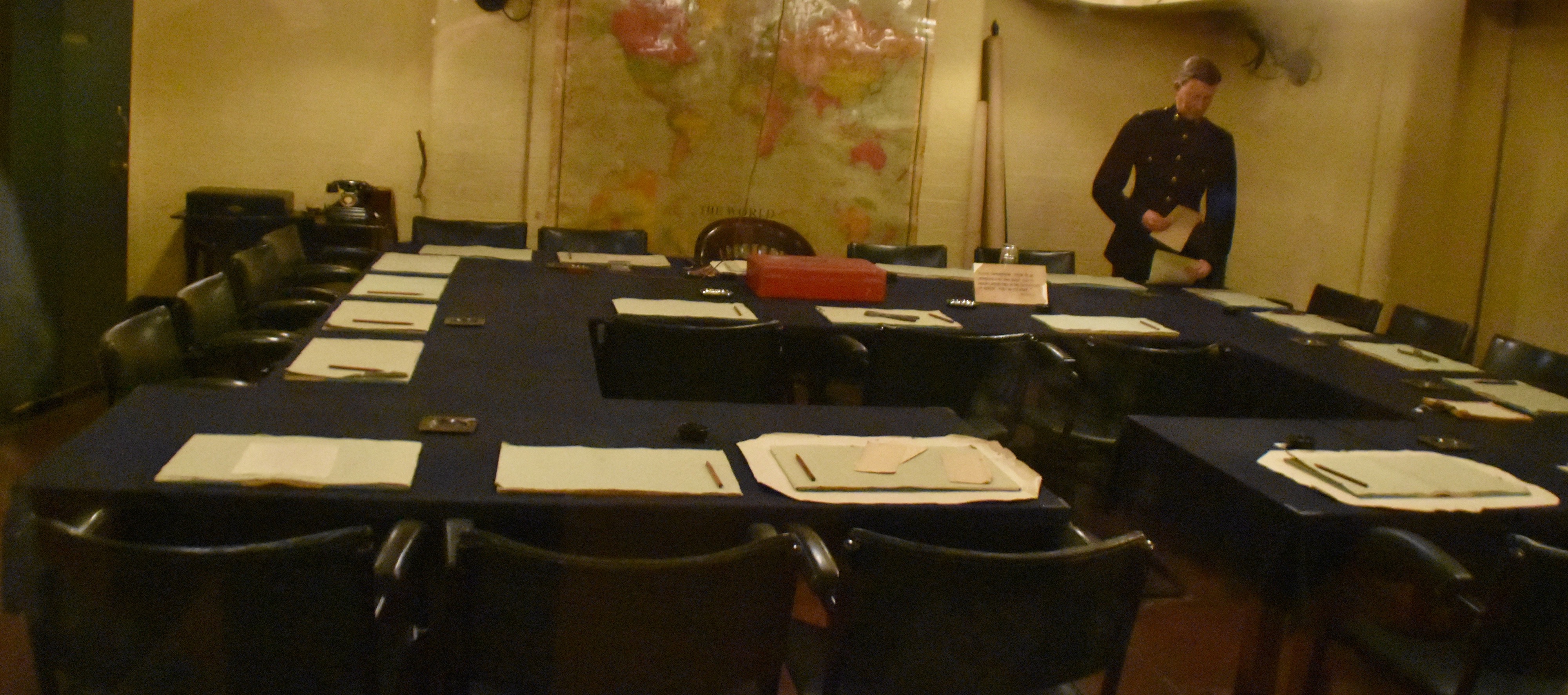
As Cabinets go, Churchill’s War Cabinet was remarkably small, comprising only eight men including Clement Attlee, the Labour leader who would defeat Churchill in the 1945 election and at the beginning, New Brunswick native son, Lord Beaverbrook, third from the left top row.
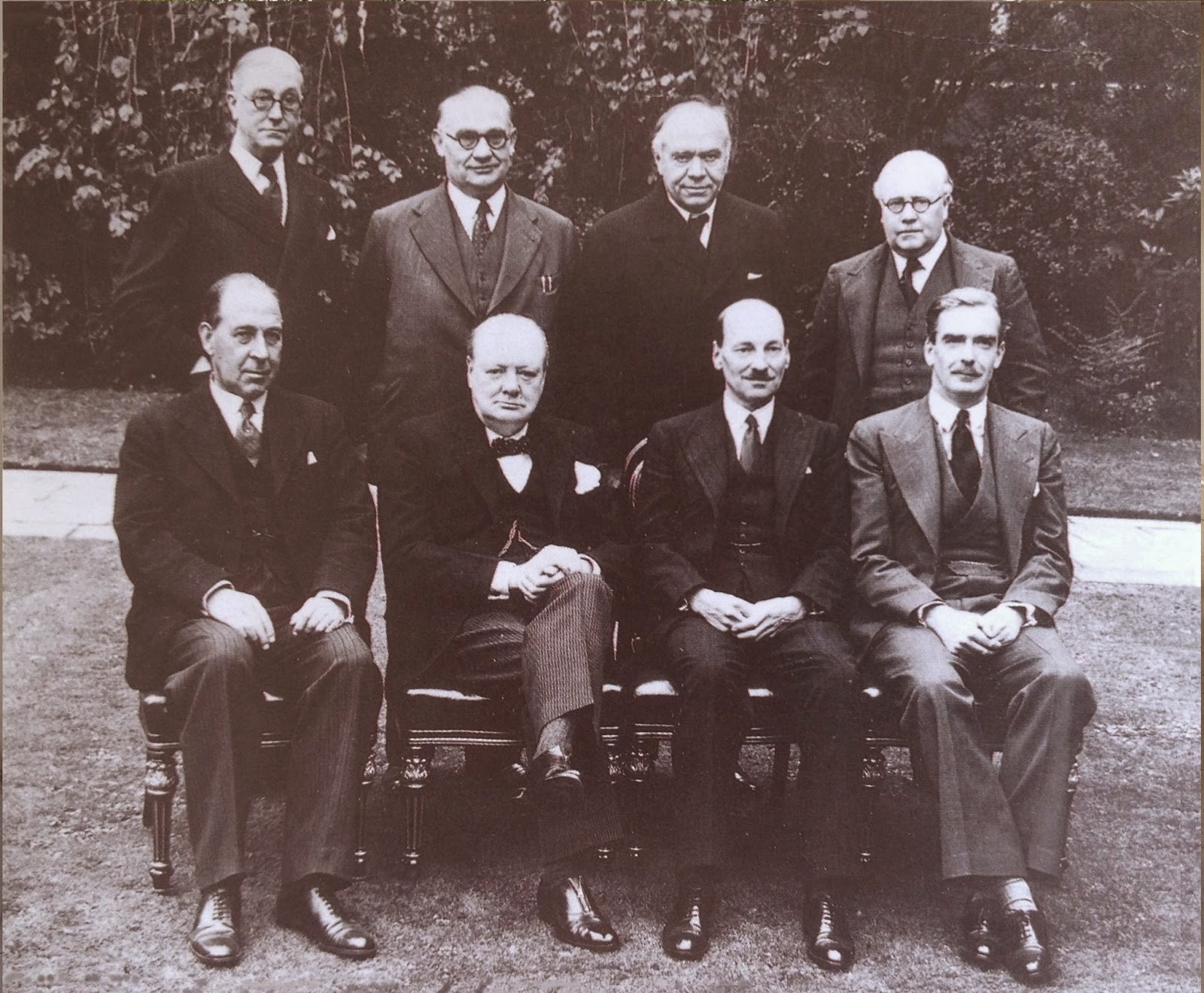
Proceeding along a long corridor it would be easy to miss the Transatlantic Telephone Room which was top secret and whose use was known only to a few (others apparently thought that Churchill had managed to install a flush toilet for himself while the others had to use primitive chemical devices). It was in fact the first ‘hot line’ – a secure link between the Churchill War Rooms and the Pentagon where Churchill could speak directly to Franklin Roosevelt, their voices scrambled by a system known as SIGSALY. So while others thought Churchill was passing gas, he was actually passing vital information to the American leader. After the war, this room was sealed and virtually forgotten until Margaret Thatcher became the driving force in opening these historic rooms to the public for the first time ever.
The Churchill Museum
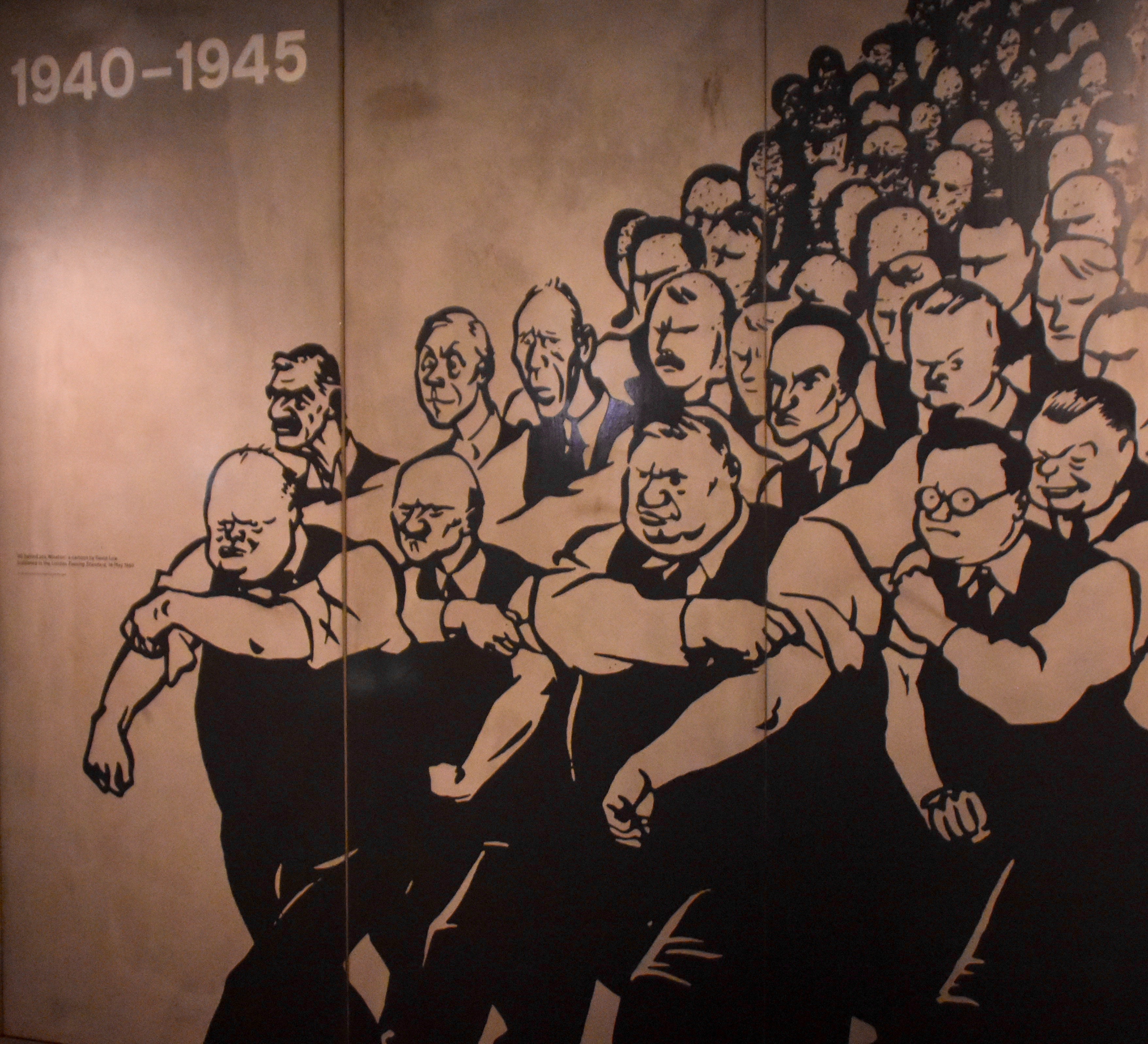
The corridor ends at the entrance to the Churchill Museum which is divided into five parts starting with the war years where you pass by this giant poster of Churchill and co. rolling up their sleeves for the task ahead. You can’t use a flash in the Churchill War Rooms so some of my photos are a bit blurred.
The other parts feature Cold War Warrior 1945-1965, Young Churchill 1874-1900, Maverick Politician 1900-1929 and the Wilderness Years 1929-1939. Each has a combination of real Churchillian artifacts, many original papers and letters that you could spend hours reading, interactive exhibits and a huge Lifeline that in and of itself is a reason to visit. It is connected to over 2250 documents, 10 films and other information that you can access with the touch of a finger. For a Churchill fan this is the ultimate experience.
These are only a few of the highlights I really enjoyed.
This curly haired young redhead is none other than the man we usually associate with a balding pate and wispy short hair.
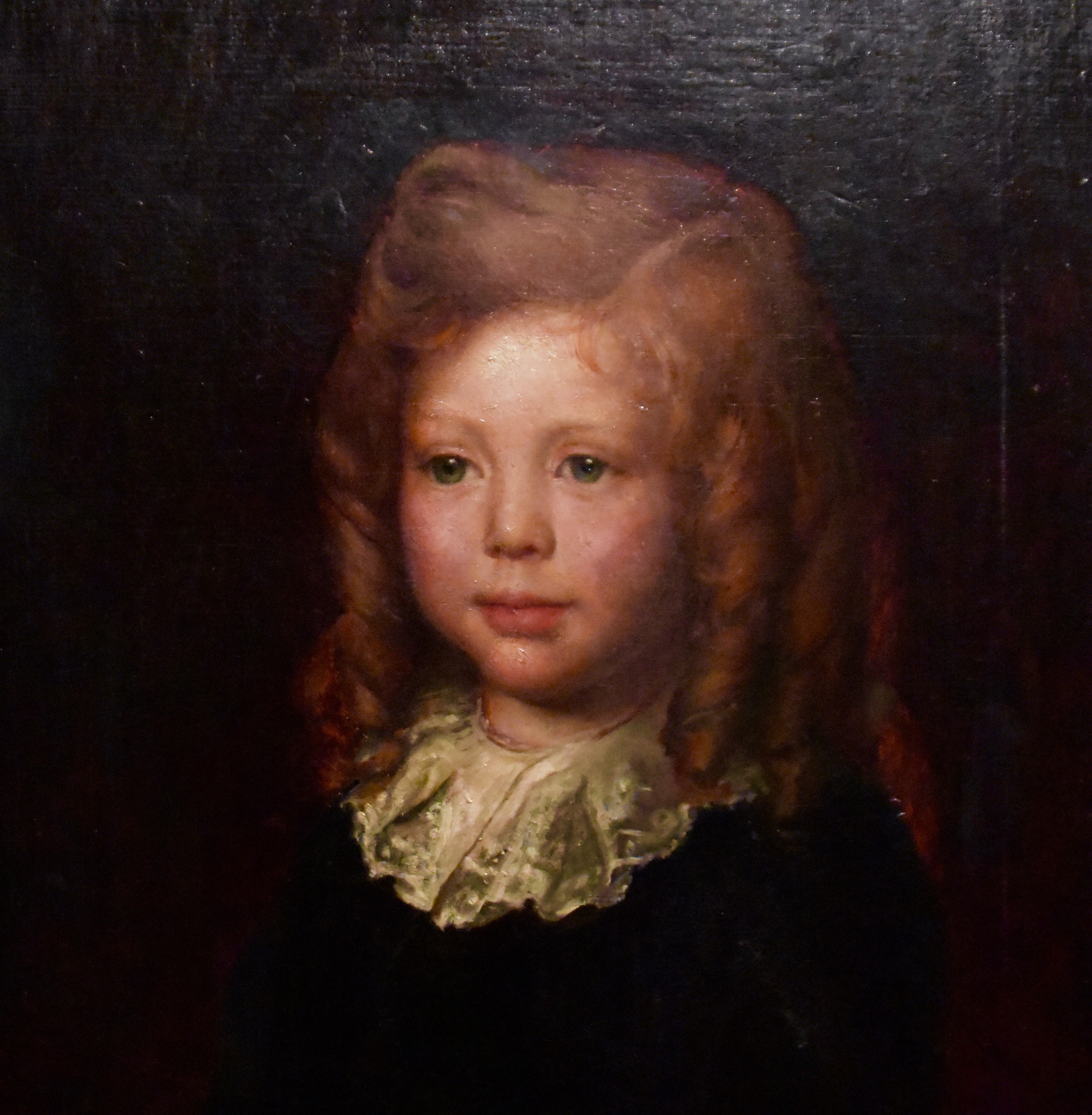
This is the actual door that Churchill entered upon becoming Prime Minister. 10 Downing Street is but a stone’s throw from the Churchill War Rooms. I don’t know if every British Prime Minister gets to keep the door they first go through, but Churchill certainly earned the right to keep his.
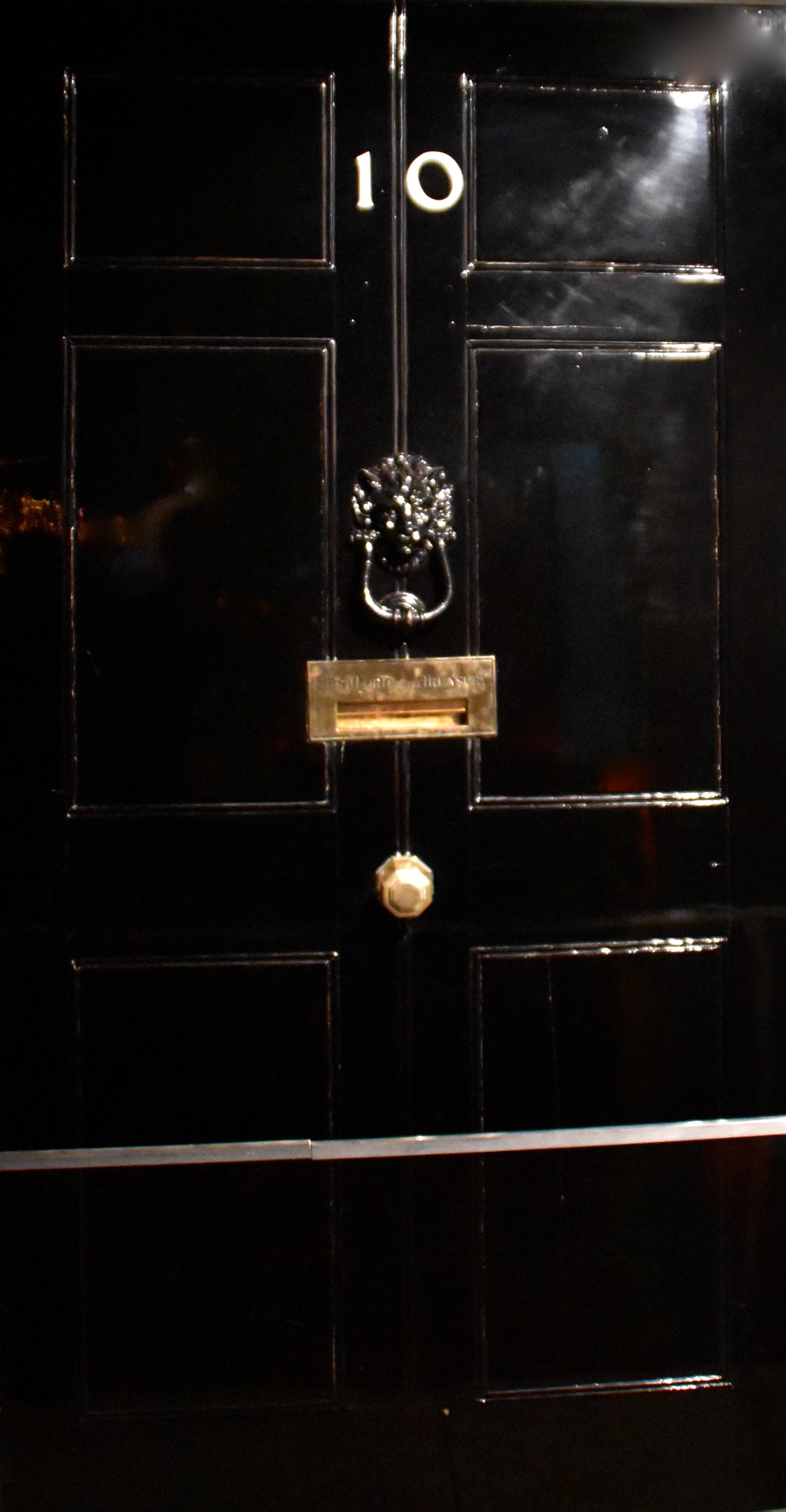
Words and even pictures cannot do justice to the Churchill Museum so I’ll just leave it at this – go see it for yourself.
Pulling yourself away from the Churchill Museum you come to the Chiefs of Staff Operations Room.
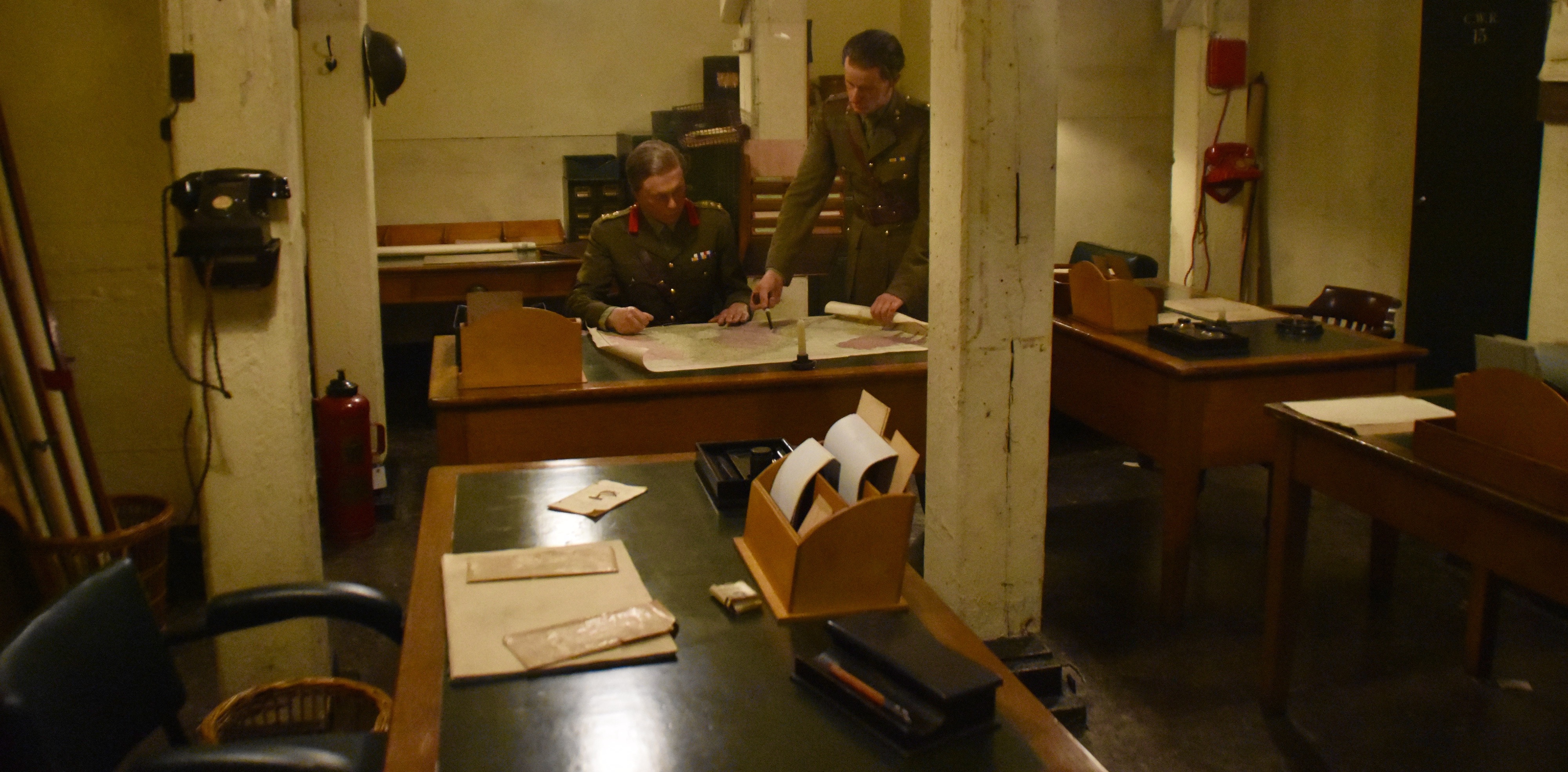
And then the BBC Room from where news of the decisions made in the Churchill War Rooms was relayed to the world.
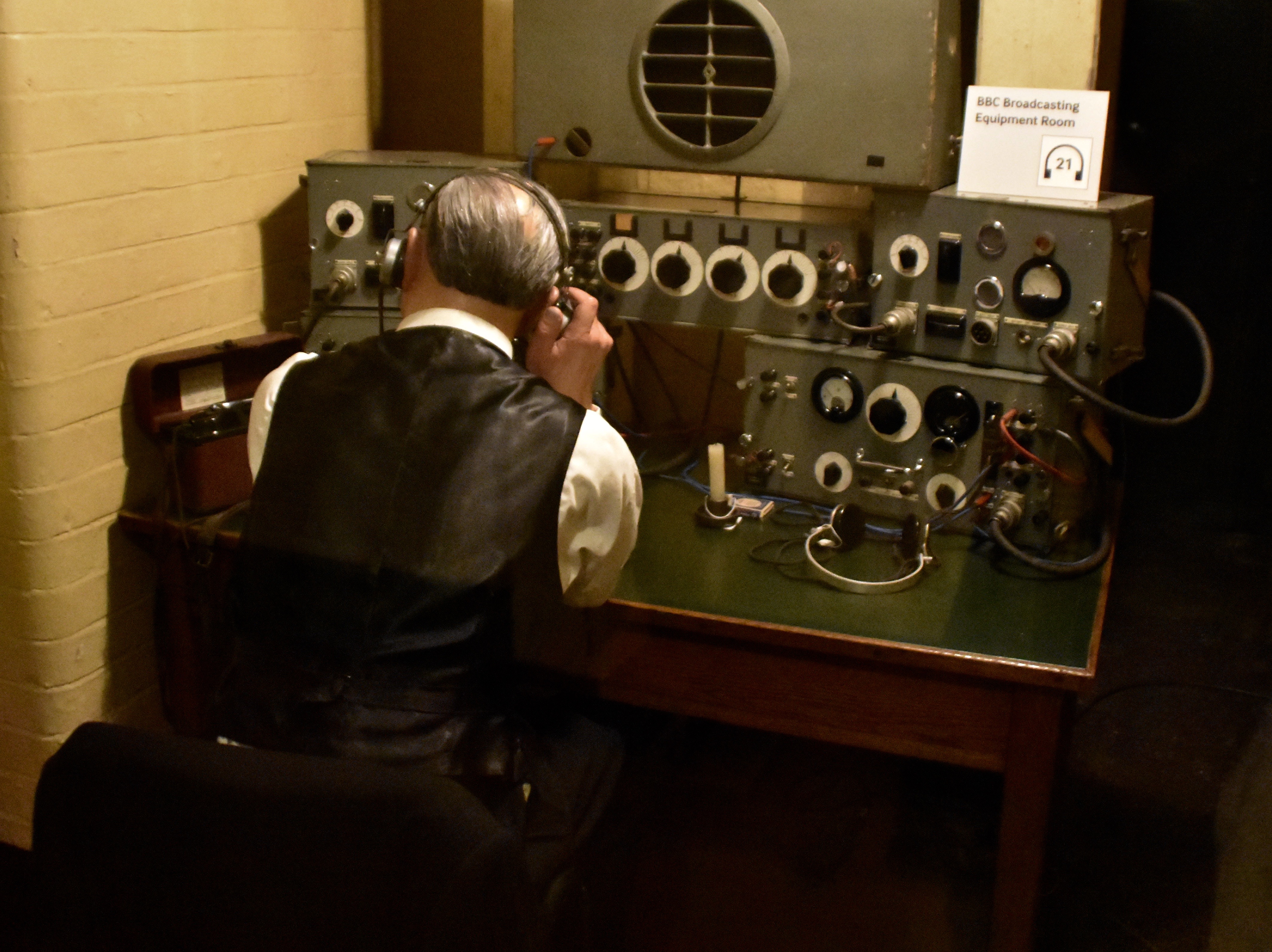
Perhaps the most interesting room in terms of what one usually thinks of in terms of war planning is the Map Room which was devilishly difficult to get a decent photo of due to the reflections off the glass. Suffice it to say that it is one of the largest rooms with maps around the walls with pins and other indications placement of armies, ships etc. marked on them.
Finally you come to this, Churchill’s bedroom, which he rarely used to sleep in, but often took naps in it and dictated memos while lying on the bed smoking a cigar. It seems such a small bed for such a great man, figuratively and literally.
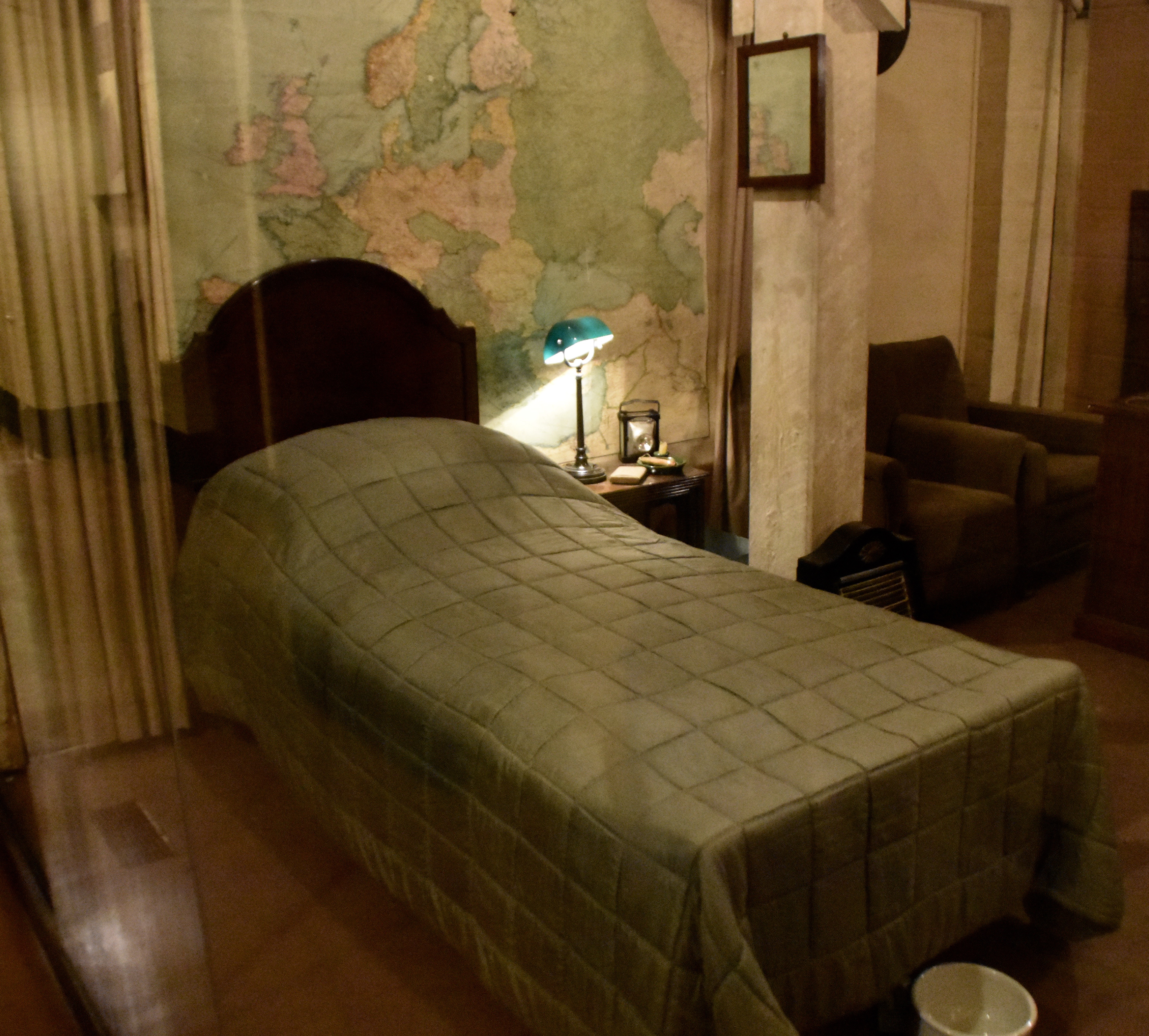
The tour ends at the gift shop which is well stocked with many Churchill related books, souvenirs and a great collection of WWII posters beseeching the British public to sacrifice for the war effort. I wonder if Winston observed the no drinking on Monday admonition. I doubt it, and who cares? No man did more for his country in terms of true leadership than Winston Churchill. If only we had such leaders today.
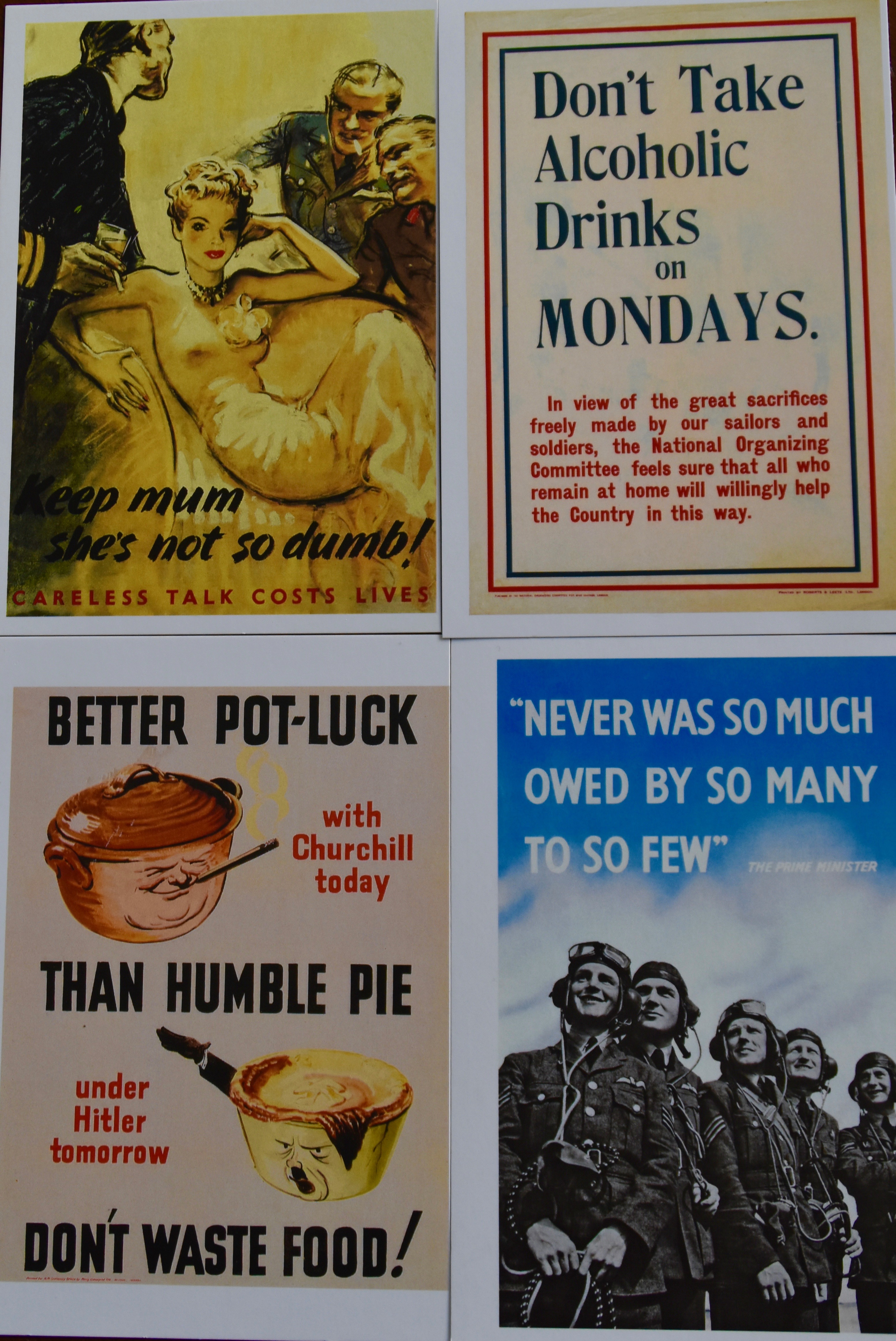
You are not going to be blown away by the grandeur or beauty of the Churchill War Rooms, but you will be by the stature of the man and the events that took place here. Add it to your itinerary on your next visit to London. I’m sure glad I did.

